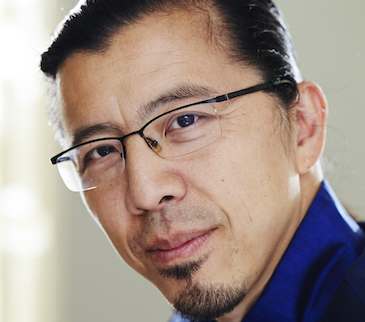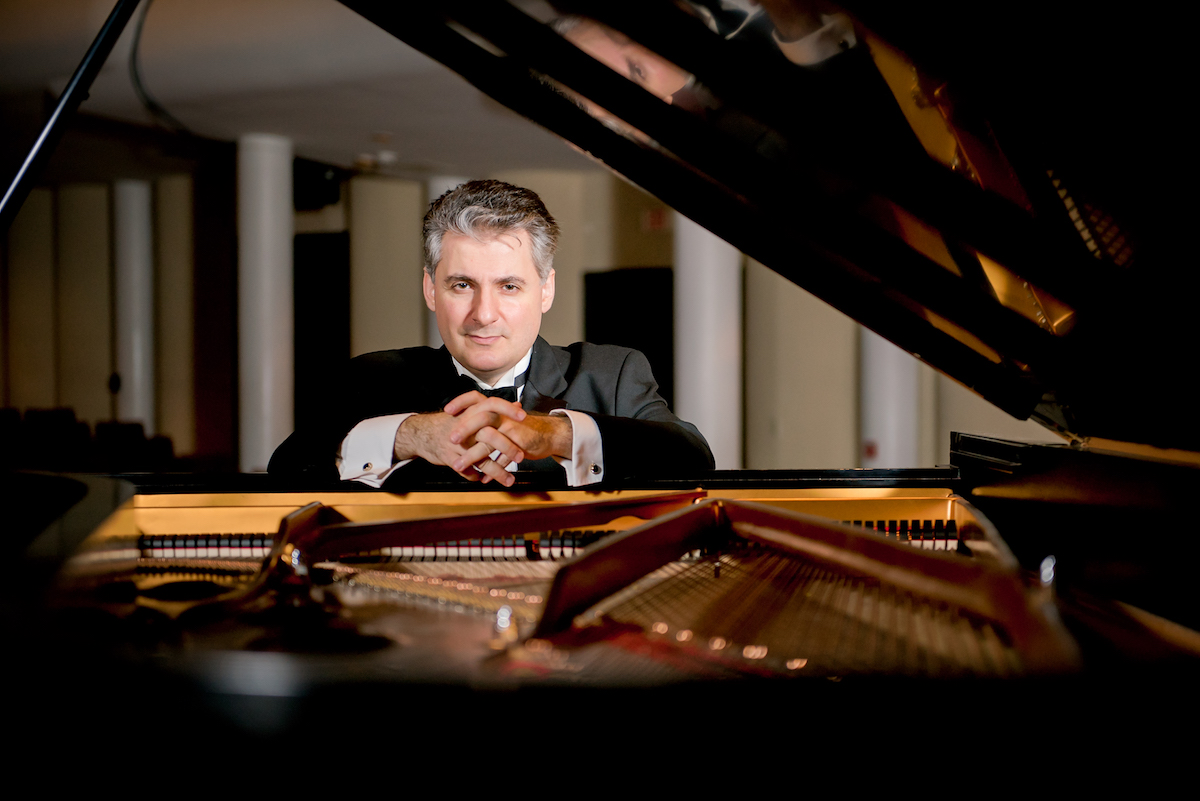How Focusing on the Process of Learning Shaped My Approach to a Challenging Piece.
Reorienting your practice to the process of learning music and becoming a better musician could be more important than the performance itself. Classical musicians perhaps have it easier than painters or designers, because we have to be more organized about our art. Many visual artists I’ve talked to like being in a chaotic environment because that helps stimulate their artistic impulses. They don’t necessarily try to put everything within an organized system. Serendipity often plays a role in creating something brilliant. With classical musicians organization becomes critical.
Recognizing that we are co-creators, rather than just the messengers of the printed music, is an essential step in making learning the goal. What is printed on a staff on a page itself is not music. It needs a performer to give it life. Thus we have a responsibility to the printed music and the audience. However, if you do something that is not in accordance with listeners emotional or mental capacities, your playing becomes offensive.
Recently Stanislav Yudenich referred to one of his former teachers, saying that the beauty of sound and music is found in proportions, and I couldn’t agree more. All proportions come down to measurement—yet, unfortunately a lot of pianists rebel at this idea. Even something which seems disproportionate has to have precise measurements. If you are an architect and build something without proper measurement, it could just break down. Rachmaninov plays Chopin’s second sonata and Schumann’s Carnaval “differently” than he played his own works. Then the question about measurement becomes relevant.
Some pianists, by default, resist this idea of measurement because it can be more emotionally satisfying to follow just an instinct or refer to natural talent. Talent can have diminishing returns, however. A young child can perform something and everyone says, “oh yes, he/she is such a talented kid.” But for a mature pianist who receives the same compliment it is no longer necessarily so complimentary; it could imply towards an element of dilettantism. A mature pianist and an eight-year-old pianist may indeed have a similar amount of raw talent. But hopefully, the mature performer has backed up that talent with more experience in the musical process and the kinds of analytical measurement of both the printed page and their learning process. We do need to use our intellectual properties to maximize emotional outcome. Beethoven certainly did this in his compositions.
In my quest to improve my playing, I’ve reflected often about what separates a fantastic pianist from a merely good pianist. I have listened to a lot of recordings, not just of big-name performers, but also pianists at the beginning of their careers. I’m rediscovering things that I have known and used for a long time, but I am analyzing them more closely now.
The greatest pianists bring something of themselves to the music in ways that no one else can replicate. If you listen to late recordings of Emil Gilels, his fine musicianship and pianism is at the highest possible level. Sviatoslav Richter had something different from Gilels—that element of theater, that presence, that incredible dominance on a stage. Musical tastes change all the time, so catering to whatever you think the market wants to hear is ultimately a losing proposition. You need to find your niche and focus what is best in your playing, and then develop everything else to serve that particular aspect. In other words, we need to discover within ourselves what is important for us and do that.
Right now, I am learning Rachmaninov’s Piano Concerto no. 3 for the first time. As you know it is one of the most challenging pieces ever written for piano and is not usually a piece someone tries to learn at the point I am in my career. However, learning this piece would help me grow as a pianist. My objective in learning it has been to challenge myself, which it certainly does! Pianistically, it is helping my hands to develop. But at this age, learning this piece is very therapeutic as well. To make something significant out of this piece, it has to be intensely personal.
Rachmaninov’s Third Concerto is just like any other composition; it’s a tool to connect with yourself. It has so many different musical and pianistic possibilities. Through this personal challenge, I am learning about myself and about better ways of playing the piano. Taking on this piece has reminded me of the distance between learning a piece as a listener and learning it as a performer. I’ve heard it many times and thought I knew it rather well. The knowledge you build while learning a piece and building an interpretation is of a different order of magnitude.
My work on this piece is only the beginning—I have many objectives to meet both in physical challenges and lots of interpretative decisions to work through. Then there is the mental preparation, and finding the best emotional state for the piece, and then the delivery. I have come to the realization lately that one can be an extremely talented, knowledgeable musician, but delivery is a whole other story. We all know this as performers to some extent. But explicitly acknowledging that delivery has altered the way I listen to performances. I’m less judgmental of others’ performances, but at the same time, my expectations are higher now, not only towards others but towards myself. I’m less critical but expect more from performers and myself.
Recognizing my goal helps me when I’m listening to someone. Nowadays, my first thought is: what can I learn from this performance and person. It’s not necessarily about learning more about the pieces. There’s a standard repertory we all know fairly well as pianists. What inspires me is the possibility that I could learn something new. I might not even agree with the way a performer does something for it to catch my attention. Sometimes I find an exciting interpretative decision from someone relatively unknown and struggle finding something similar from an artist with a more extensive career.
The goals you should choose for each piece should be simple. During my Doctoral studies I did extensive research on Rachmaninov’s music. Rachmaninov’s favorite compositions were All-Night Vigil, op. 37 for a cappella choir and The Bells, op. 35 a choral symphony. He composed so much piano music, yet he was proudest of his choral music. We know that the singing tone of the piano is a strong emotional component of his piano music. It made me realize that his piano compositions also had the longevity of sound you get from bells and choral music. I believe that even the fast passages in Rachmaninov’s compositions must be played in a way that showcases the enormous relationship of his piano music with his vocal compositions.
I’ve been listening to many interpretations of the concerto. The recording of Van Cliburn from the Tchaikovsky Competition in Moscow stands out. He plays it easily and freely. That performance is perfectly in proportion. It’s an old recording, but you can tell his approach to the tone quality is full but without any percussiveness. When you listen to others’ recordings, the concerto becomes laborious.
It’s easy to play Rachmaninov with a heavy hand. But if you listen to the remastered recording of Rachmaninov playing his Symphonic Dances, op. 45, it’s unbelievable how he gets the chords so gentle and yet so full at the same time. His approach was about the quality of the music. He wasn’t interested in the business elements or in being showy in the way he played. Van Cliburn recaptured some of that approach in the Tchaikovsky competition recording. The way he sits, the way he plays, and the way he focused all contributed to the superb effect. I think Cliburn’s performance is unmatched now. When you listen to Horowitz playing Rachmaninov three, you can be thrown off of the path. He goes in an entirely different direction. It was a well developed interpretation as well. Rachmaninov heard Horowitz’s interpretation and was impressed, even though it was very different from how he played it himself. So again, it’s about finding a way of playing the piece that is deliberate, satisfying, and personal to you.
I think in Rachmaninov’s music everything should be melodic. We cannot say the same thing about other composers like Prokofiev, though his lyricism is incredible. But the element of melodicity in Rachmaninov’s long phrases is one of the key aspects of playing his music. By keeping that in mind, the chordal textures in the accompaniment become better defined. And you can hear the same thing in Rachmaninov’s own performance of the Symphonic Dances.
Building an interpretation is a self-discovery process. Our results may vary, depending on the piece. Experienced musicians realize that sometimes you might overdo something. But if you have a clear idea of your goal, you can readjust your approach when needed.
Read how to practice your instrument focusing on the process of learning.
Read more how to focus on the learning process in the practice room.

Edisher Savitski
Pianist Edisher Savitski has been performing at prestigious venues worldwide. To name a few: Carnegie Zankel Hall and Carnegie Weill Hall, New York; Wigmore Hall, London; Great Hall of Mozarteum, Salzburg, Austria; Mariinsky Theater and Concert Hall, St. Petersburg, Russia; Teatro alla Scala, Milan, Italy as well as in other venues in USA, Canada, Germany, Georgia, Spain, Italy, Portugal, Switzerland, France, Russia, United Kingdom, Israel, Austria, Morocco, China, Japan and New Zealand.
He performed at major music festivals such as: Salzburg Festival, Austria; Gilmore Keyboard Festival, Ravinia Festival, USA; Ruhr Festival, Germany; Ravenna Festival, Stresa Festival, Maggio Musicale Festival in Florence, MITO Festival, Italy; Rachmaninoff and Tchaikovsky festivals through Pittsburgh Symphony.
In November 2007, Dr. Savitski became first pianist who performed in an unprecedented live performance/press conference, from his home in South Bend, Indiana on a Yamaha Disklavier piano that was connected to another Disklavier piano in the Recital Hall of Yamaha Artist Services International in New York City. He is a Yamaha Artist.
Edisher Savitski is the first prizewinner of the Third International Piano-E-Competition in 2006 and the Hilton Head International Piano Competition in 2001, and took top prizes at the First International Piano-E-Competition in Minneapolis and the William S. Byrd International Piano Competition in Michigan.
Born in Tbilisi, Georgia, Dr. Edisher Savitski studied in the Central Music School under Maya Beridze and in the Tbilisi State Conservatory under professor Nana Khubutia. In 1998 he joined the renowned Alexander Toradze Piano Studio at the Indiana University South Bend, where he earned Masters degree, Artist diploma and has been awarded with the Performers Certificate. In Spring 2013 he earned a Doctor of Musical Arts degree in performance from Michigan State University.
Dr. Savitski is an assistant professor at the University of Alabama School of Music.



Comments are closed.